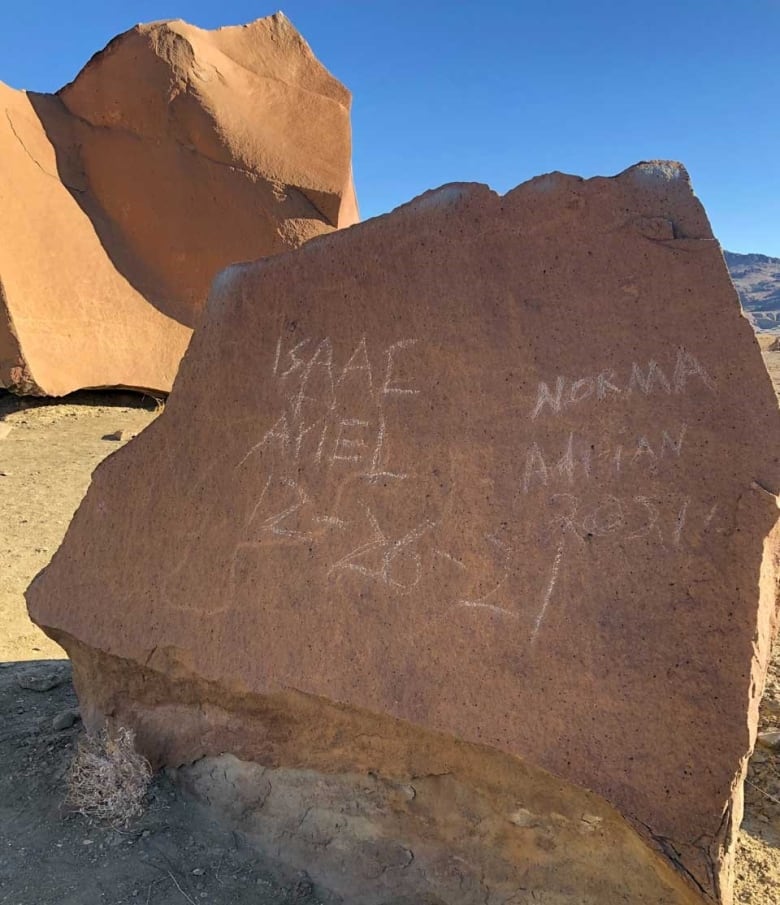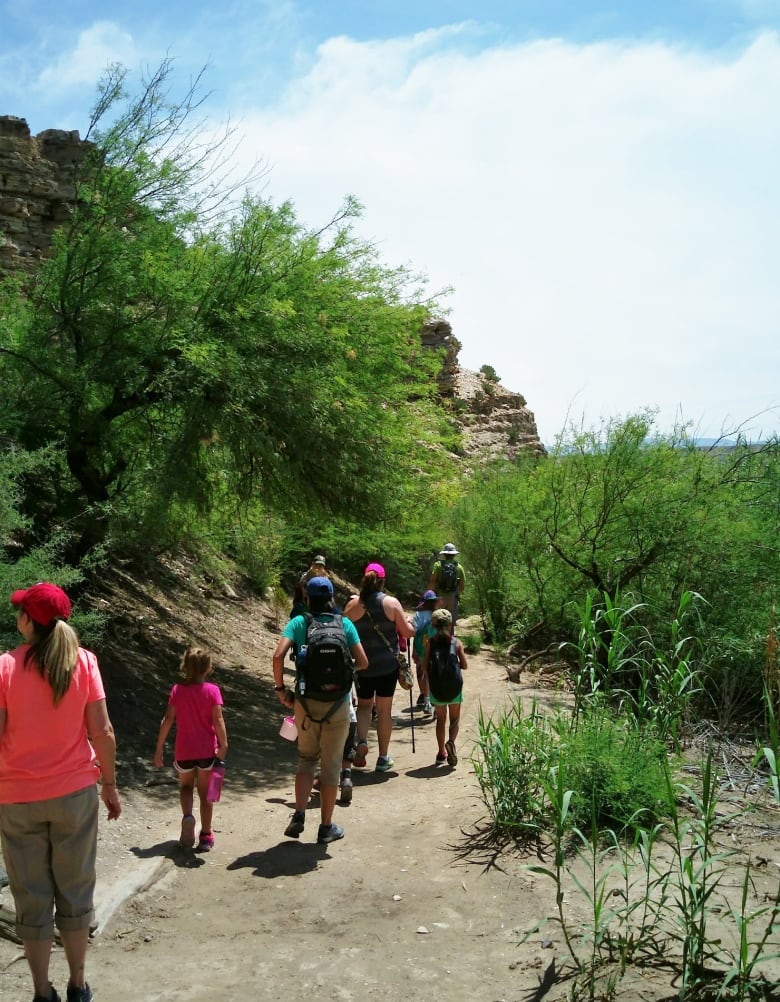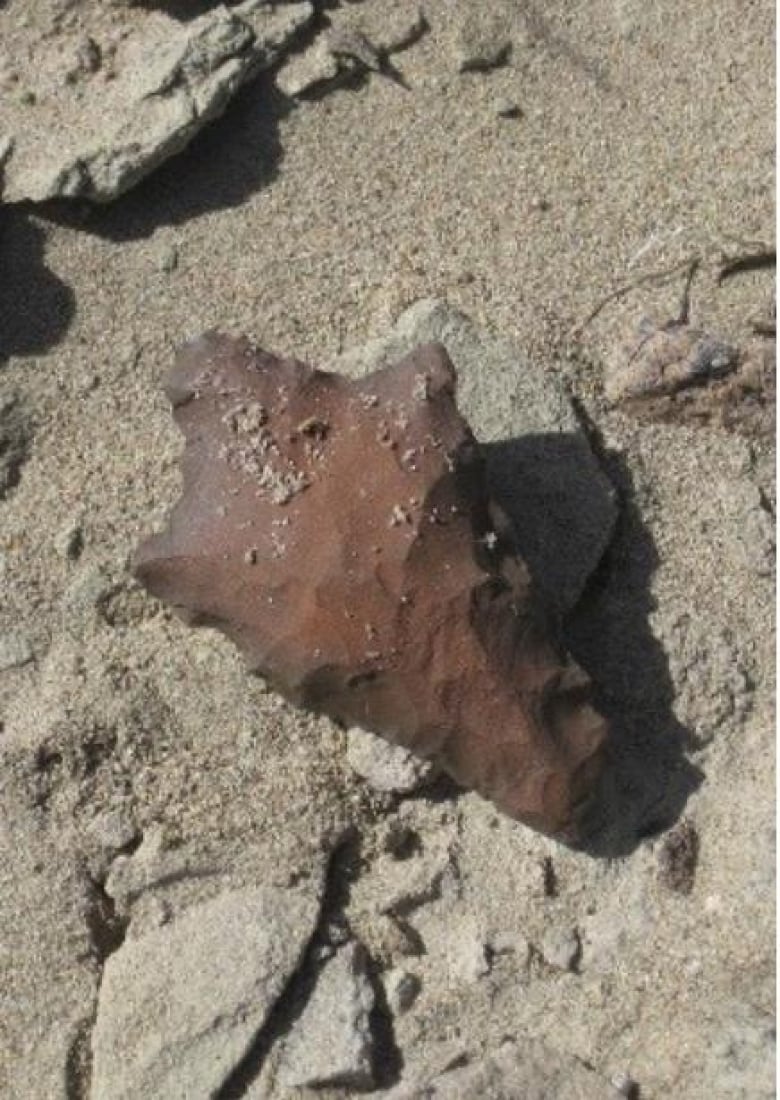[ad_1]
Petroglyphs, or rock carvings, that had been etched right into a Texas desert rock 1000’s of years in the past had been broken and obscured by vandals who scratched names and dates into the rock face, based on Large Bend Nationwide Park officers.
Park employees are trying to find whoever defaced the traditional swirls of rock artwork within the Indian Head space of Large Bend Nationwide Park on Dec. 26 in southwest Texas.
It is a private blow for Tom VandenBerg, chief ranger for the park’s interpretation and customer providers division.
VandenBerg mentioned graffiti within the park, which noticed report visitation numbers prior to now 12 months, is not new, however irreparably damaging archaic rock etchings is senseless.
“What we sometimes see in a nationwide park is individuals scratching their title on a picnic desk or a park signal or one thing like that. However after they do it proper excessive of fairly pronounced rock artwork, that is tough for these of us which have devoted our careers to caring for these locations,” VandenBerg instructed As It Occurs host Carol Off.

It is a part of a rising pattern of harm to U.S. parks as extra individuals hit the paths, usually pushed by social media posts that sign the place to search out attention-grabbing spots.
At Large Bend, there have been about 50 graffiti or vandalism incidents prior to now 5 years as park visitations doubled.
The park now sees about 600,000 guests a 12 months.

The seek for the Large Bend park vandals began with Isaac, Ariel, Norma and Adrian. The 4 names had been scratched into the 30-million 12 months outdated reddish rock, alongside the date Dec. 26, 2021.
Leads have been pouring in on the suspects, because the park service launched the knowledge.
The scrawled names obscure a wavy line, etched within the rock an estimated 4,000 to eight,500 years in the past in the course of the Archaic Interval. This was a 7,500-year time interval the place Native American communities hunted small recreation with an atlatl or small spear. The rock etching that was marred is an instance of pre-contact Native American artwork.
Anthropologist Jan Simek of the College of Tennessee referred to as the vandalism “disturbing” and “egocentric.”
“The art work is sacred and exquisite, and its destruction completely removes historical and significant facets of our homeland…[such] desecration signifies that the perpetrators don’t have any respect for the unique inhabitants of our nation,” Simek mentioned in an e mail to CBC Radio.
Large Bend Nationwide Park was acquired by the U.S. authorities, and opened in 1944. It is a prime instance of the Chihuahuan Desert in a spot with 13,000 years of human historical past, southeast of El Paso, close to the Mexican border.
Harm to historical rock artwork can result in jail time, fines
Repairs are underway to attempt to save the traditional rock artwork.
The subsequent day, an archeological group went to work with distilled water and tiny brushes to attempt to mitigate the etched harm, based on VandenBerg.
“We prefer to get on it in a short time as a result of graffiti tends to develop extra graffiti,” he mentioned.
The repair is not excellent, but it surely seems “a thousand occasions” higher, he mentioned.

Rock artwork restoration consultants say graffiti has seen a dramatic rise because the Nineties. Johannes (Jannie) Loubser, an archeologist and rock artwork specialist based mostly in Georgia, is commonly referred to as in to parks or heritage websites to painstakingly repair rock artwork that is painted or gouged.
He hopes this web site might be restored.
“All of it depends upon the depth of the scratch. This case was not deep, judging from the pictures. [The] chalk-like rock mud might be brushed and poulticed away, leaving a comparatively unblemished floor,” mentioned Loubser.
However, he says, even when not as seen, the harm will stay.
He advises maintaining vehicles and foot trails away from rock artwork, or including signage or protections, to assist forestall harm.
The harm carried out to rock artwork is dear to attempt to repair. It’s also unlawful. Damaging a park useful resource is a federal violation that may result in an as much as $5,000 positive or jail time. Damaging historical cultural websites is a violation of the Archaeological Assets Safety Act (ARPA).
VandenBerg says the easiest way to guard the archaic rock etchings is to stay a bit obscure about the place they’re. However social media is making that methodology much less and fewer efficient.
“This rock sat there for 1000’s of years, wanting because it did till somebody selected to change it,” he mentioned.
Written by Yvette Brend. Interview produced by Kate Cornick.
[ad_2]
Source link














